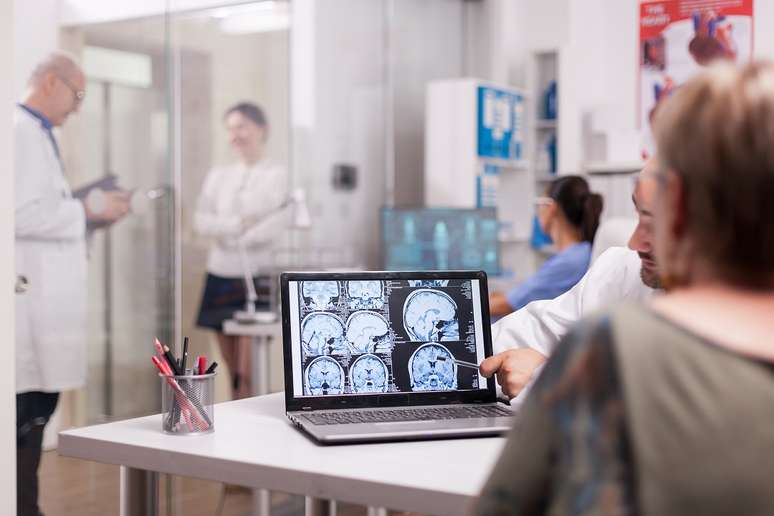The disease reaches between 10 and 15 people per 100,000 inhabitants, learn to prevent
The campaign strengthens the importance of diagnosis and early treatment to save human lives
The Blue and Red campaign of August strengthens the awareness of vascular diseases, including cerebral aneurysm – a condition that reaches between 10 and 15 people per 100,000 inhabitants, according to data from the World Health Organization (WHO). The initiative feels of the importance of prevention, early diagnosis and adequate treatment to avoid serious complications and even dead.
What is brain aneurysm?
The cerebral aneurysm is an abnormal expansion in a brain artery that can break, causing bleeding and serious damage. “The aneurysm occurs when the wall of the blood vessels weakens, forming a kind of bag that can explode at any time,” explains the neurosurgeon Dr. Victor Hugo Espíndola. “When this happens, subaracnoid bleeding occurs, which causes greater pressure within the skull and can lead to irreversible damage.”
According to WHO, the disease is more frequent in women, in the proportion of three for every two men, and mainly affects adults between 35 and 60 years old, although children can also develop the condition. “Because it is silent, the aneurysm often has no symptoms until it breaks, which makes early diagnosis difficult”, warns dr. Victor Hugo.
Symptoms
Symptoms such as sudden and intense headache, double vision, loss of balance. In addition, mental confusion and the rigidity of the neck are signs that indicate the need for an urgent medical evaluation. “The very serious headache, accompanied by nausea and other neurological symptoms, deserves attention immediately”, strengthens the expert.
The main causes of the aneurysm include arterial hypertension, smoke, genetic predisposition and changes in the walls of the arteries. “Check blood pressure, avoid smoking and the execution of preventive tests are essential measures to reduce risks”, leads neurosurgeon.
Diagnosis and treatment of cerebral aneurysm
Doctors often diagnose the problem through non -invasive imaging, such as Angiotomography or Cerebral Magnetic Angi, which show the cerebral arteries in detail. They indicate brain angiography, a more invasive exam, only when the initial exams already indicate the presence of a aneurysm and it is necessary to confirm to define the treatment.
The treatment varies according to the size and risk of aneurysm. “Small aneurysms can be clinically accompanied, but higher risk those require surgery, cutting or endovascular embolisation,” describes the doctor in detail.
The neurosurgeon strengthens that preventing and the cerebral aneurysm of early identification can save human lives. “Be aware of the symptoms, keep healthy habits and look for fast medical care are attitudes that make the difference,” concludes Victor.
Source: Terra
Ben Stock is a lifestyle journalist and author at Gossipify. He writes about topics such as health, wellness, travel, food and home decor. He provides practical advice and inspiration to improve well-being, keeps readers up to date with latest lifestyle news and trends, known for his engaging writing style, in-depth analysis and unique perspectives.





![Such an excellent sun in advance: Summing the episode on Monday, August 18, 2025 [SPOILERS] Such an excellent sun in advance: Summing the episode on Monday, August 18, 2025 [SPOILERS]](https://fr.web.img3.acsta.net/img/8e/43/8e43d219e8ecbfc92f7d58aebd968d1e.jpg)
![Everything starts here: What awaits you in the episode 1243 Monday, August 18, 2025 [SPOILERS] Everything starts here: What awaits you in the episode 1243 Monday, August 18, 2025 [SPOILERS]](https://fr.web.img3.acsta.net/img/1e/c0/1ec09a0cc4373d300297e2cc0c61697e.jpg)

